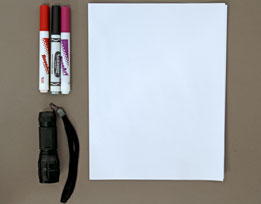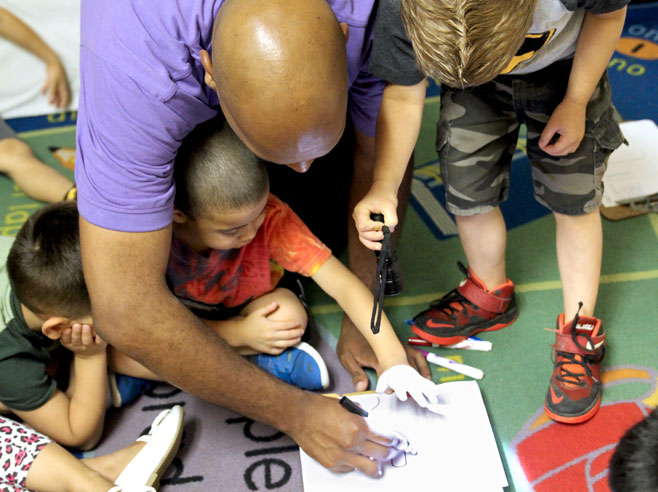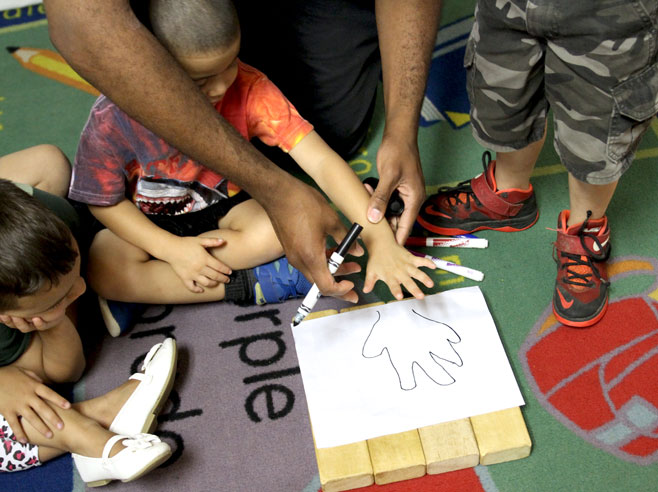Children make predictions and test them out as they explore what happens to the size of a shadow when a light source is moved closer to the object, then farther away.
Materials

- Drawing paper
- Crayons or markers, 3 different colors
- Flashlight
Directions: Lesson 5
Circle Time: Introduction
- Introduce the idea that this week the class will be exploring ways to change shadows by moving the light. Invite a child to help you in a demonstration.
- The child will hold his or her hand about 3 inches above the floor. Place a piece of drawing paper on the floor, below the child’s hand. Hold a flashlight, with the light OFF, about 1 inch above the child’s hand.
- Ask the class to make predictions: I’m holding this flashlight close to (child’s name) hand. When I turn the flashlight ON, do you think that her/his hand will cast a big shadow or a small shadow? Why do you think that? Do other children agree or disagree? Turn on the flashlight and let children observe if their predictions were correct.
- Invite a second child to hold the flashlight in the same position, about 1 inch above the first child’s hand. Trace the outline of the shadow of the child’s hand on the paper on the floor. (Child’s name) hand is really close to the light, so it blocks a lot of light. That makes a big shadow.
- Encourage children to make predictions: What do you think will happen if we move the flashlight a little bit farther away from the hand? Do you think the shadow will get bigger or smaller? Why do you think that? Have your student helper hold the flashlight just a couple of inches higher than before. Is the shadow bigger or smaller? Was your prediction correct? Trace the hand shadow outline in a different color.
- Repeat the actions and questions in step 3, moving the flashlight a bit higher again and tracing the shadow in a third color.
- Point to the largest outline of the hand shadow. Where should we move the flashlight to make the biggest shadow again: closer to the hand or farther away? Try out children’s answers and see if they are correct.
- Save the tracing of the hand shadows. You will use it again in the Learning Center.
Learning Center
- At the Learning Center, children can continue to explore making big and small shadows alone or with a partner. Invite children to describe and compare the shadows. Possible discussion ideas:
- Did (child’s name) make his hand shadow get bigger or smaller?
- How did he do it?
- Which way did he move his hand? Yes, he moved his hand closer to the flashlight. His hand blocked a lot of light and made a big shadow.
- Help children recap: You can make your hand shadow grow bigger by moving . . . your hand closer to the light OR the light closer to your hand.


